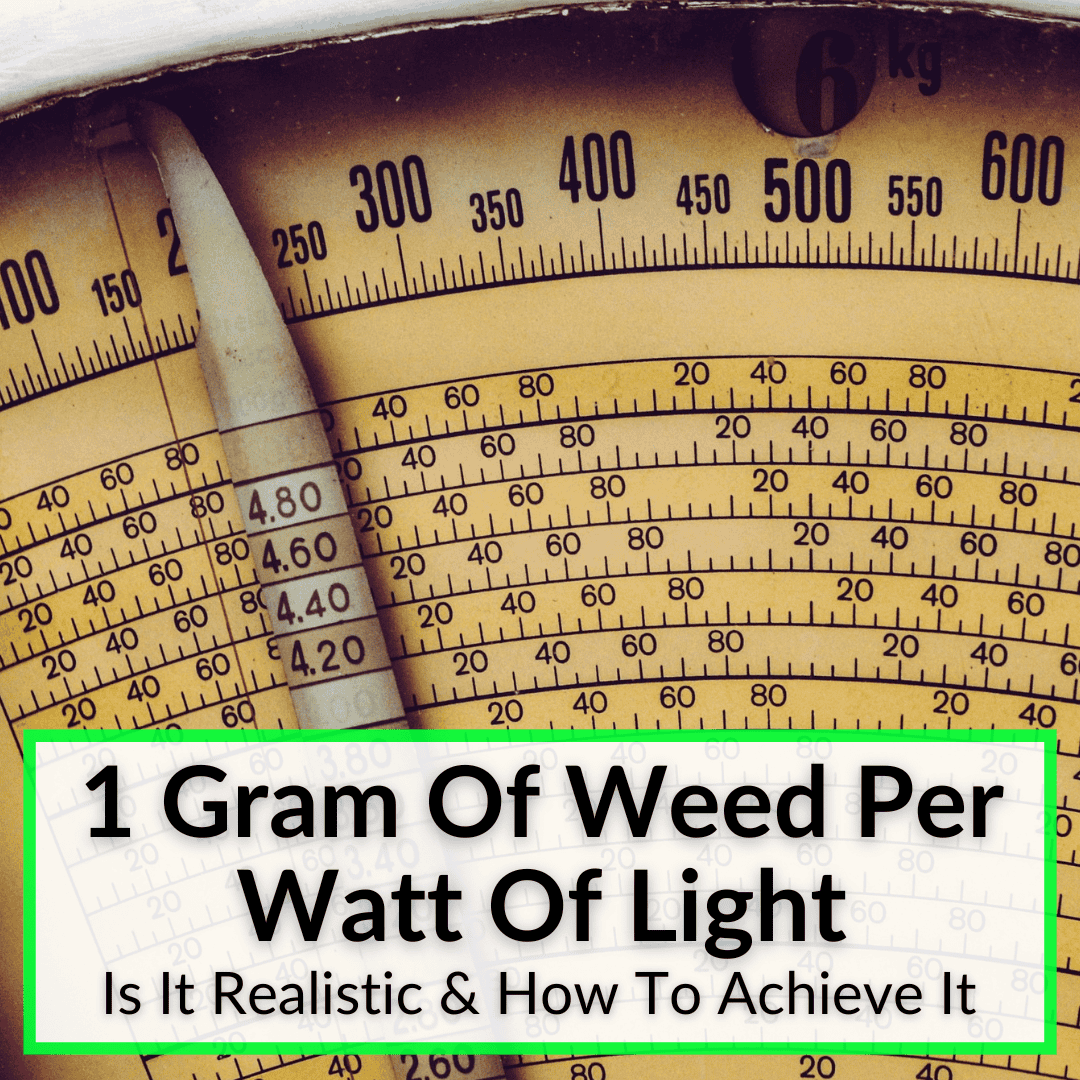 It is important to understand one thing.
It is important to understand one thing.
1 gram of weed per watt of light is just an arbitrary benchmark, nothing more.
It gained popularity, because it is easy to remember and it signifies an efficient operation.
And efficiency is something we all strive for.
We want the best possible yield for the lowest amount of money spent.
Is 1 g/W the best we can do?
No. It is certainly possible to do better. But it is still a high standard.
Reaching it is hard and it means you are doing an excellent job. But you can reach it if you follow the tips below.
Contents
The 1 Gram Of Weed Per Watt Of Light Benchmark
The “1 gram per watt” (1 g/W) benchmark is a metric in cannabis cultivation to evaluate the efficiency of a grow operation.
Specifically, it measures the amount of dried cannabis flower produced (in grams) per watt of light energy consumed. This benchmark provides a straightforward way for growers to assess the productivity and efficiency of their grow.
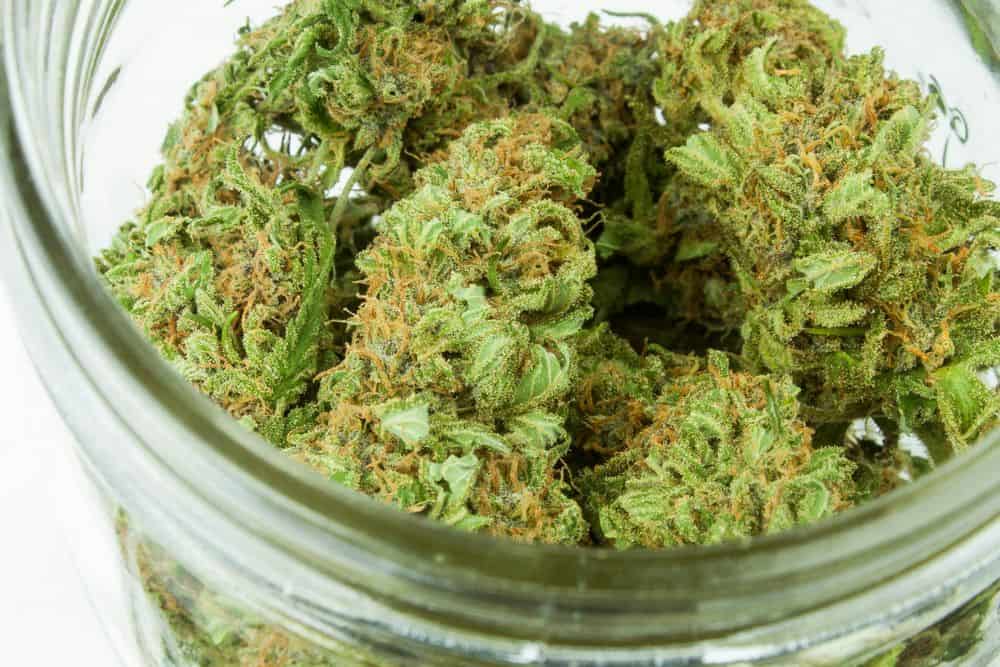
For instance, if a grower uses a 600-watt light and harvests 600 grams of cannabis, they have achieved a 1 g/W yield.
The 1 g/W benchmark has its roots in the pursuit of optimizing indoor cannabis cultivation, where light is one of the most significant inputs.
As growers sought to maximize their yields while managing costs, particularly electricity, this benchmark emerged as a practical standard.
Over time, it gained popularity within the cannabis cultivation community, both among hobbyists and commercial growers, due to its simplicity and direct relevance to operational efficiency.
Strategies To Achieve 1 Gram Per Watt
In order to achieve the 1 gram per watt standard, you need to improve the efficiency of your grow. Here are some ways to do that.
Grow Light Choice And Placement
Selecting the appropriate grow light is crucial for achieving the 1 g/W benchmark. I recommend LED lights due to their energy efficiency, full-spectrum light, and lower heat output.
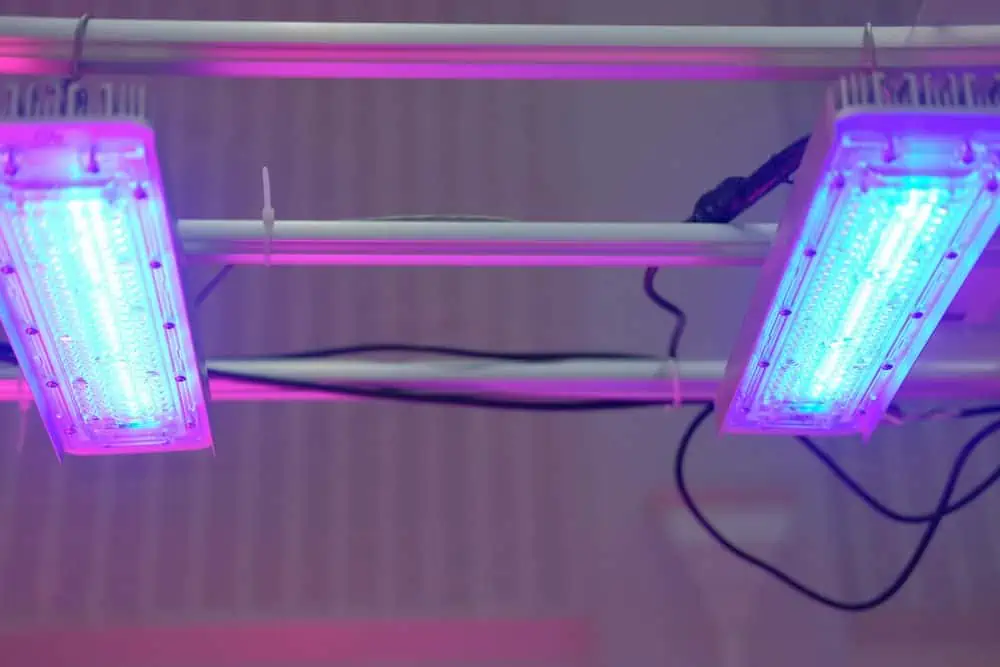
HPS lights, while traditionally popular, consume more power and generate more heat, which can complicate environmental control.
Regardless of the type, you want to position the lights so as to ensure even coverage and optimal intensity. Using reflectors and strategically placing lights at the correct distance from the canopy can enhance light distribution, ensuring all parts of the plant receive adequate light.
Maximize Light Penetration And Coverage
To maximize light penetration, consider techniques such as LST (Low-Stress Training) to create an even canopy, ensuring all bud sites receive direct light. The SCROG (Screen of Green) technique can also help spread the canopy and optimize light exposure.
Reflective materials on walls and floors can increase light efficiency by bouncing light back onto the plants. Regularly adjusting the height of the lights as plants grow helps maintain optimal light intensity and coverage.
Implement Effective Climate Control Systems
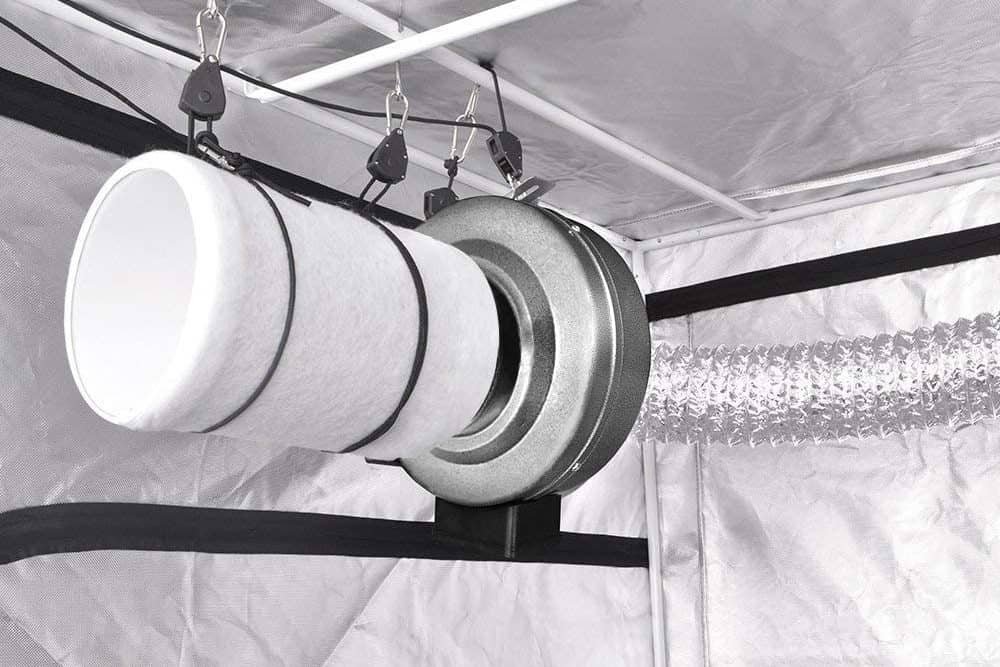
Automated climate control systems can significantly enhance the growing environment by maintaining consistent conditions. These systems regulate temperature, humidity, and CO2 levels, ensuring they remain within the optimal range for cannabis growth.
Incorporating sensors and controllers allows for precise adjustments, reducing plant stress and promoting healthier, more productive growth.
Manage Temperature, Humidity, And CO2 Levels
Maintaining temperatures between 70° F and 85° F (20° C and 30° C) during the day and slightly cooler at night is ideal. Humidity should be around 40% to 60% during the vegetative stage and reduced to 40% to 50% during flowering to prevent mold and mildew.
Supplemental CO2 can enhance growth rates and yield, particularly in sealed grow rooms. Proper ventilation is also crucial to remove excess heat and humidity, providing fresh air and preventing diseases.
Select High-Yield Strains
Choosing cannabis strains known for their high yield potential is a big step towards achieving 1 g/W. Strains such as Big Bud, Critical Mass, and certain hybrid strains are bred specifically for their prolific yield characteristics.
Researching and selecting strains that perform well under your specific growing conditions can make a significant difference in achieving high yields. This article lists some high-yielding autoflower strains.
Understanding the genetic traits of the chosen strain is essential. Factors such as growth patterns, resistance to pests and diseases, and nutrient requirements vary between strains.
Selecting genetically robust strains that thrive in your grow setup and managing their growth according to their specific needs can enhance overall yield and efficiency.
Implement Advanced Growing Techniques
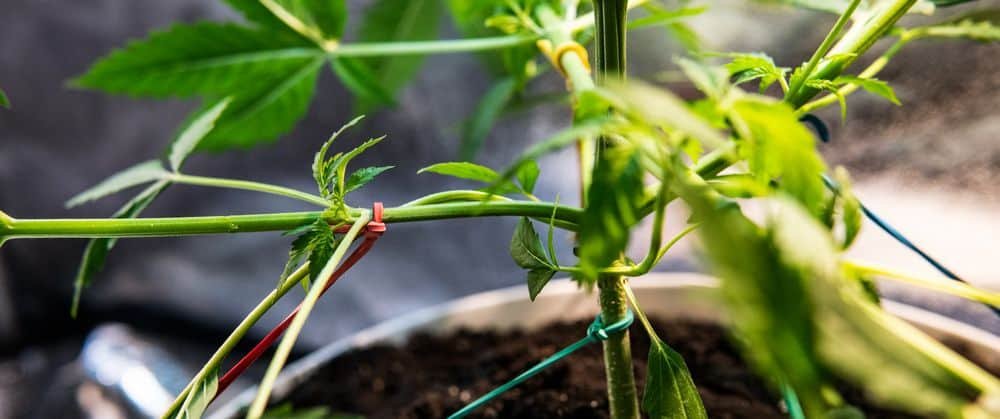
Advanced training techniques like topping, super cropping, and main-lining can increase the number of bud sites and promote even growth. Pruning excess foliage improves light penetration and airflow, reducing the risk of mold and pests.
These techniques, when applied correctly, can significantly increase yield by directing the plant’s energy towards bud production rather than unnecessary foliage.
Hydroponic systems, such as Deep Water Culture (DWC), Nutrient Film Technique (NFT), and aeroponics, can boost growth rates and yields by providing plants with easy access to nutrients and oxygen.
These systems often result in faster growth cycles and higher yields compared to traditional soil growing. Additionally, they allow for precise control over nutrient delivery, reducing waste and improving efficiency.
Proper Nutrient Management
Creating a balanced nutrient regimen tailored to the specific growth stages of your cannabis plants is crucial.
During the vegetative stage, higher levels of nitrogen promote vigorous growth, while the flowering stage requires increased phosphorus and potassium to support bud development. Using high-quality nutrients and supplements can enhance plant health and yield.
Regularly monitoring your plants and adjusting feeding schedules based on their developmental stage and overall health is essential.
Observing signs of nutrient deficiencies or toxicities and making timely adjustments ensures plants receive the optimal nutrient levels required for maximum growth.
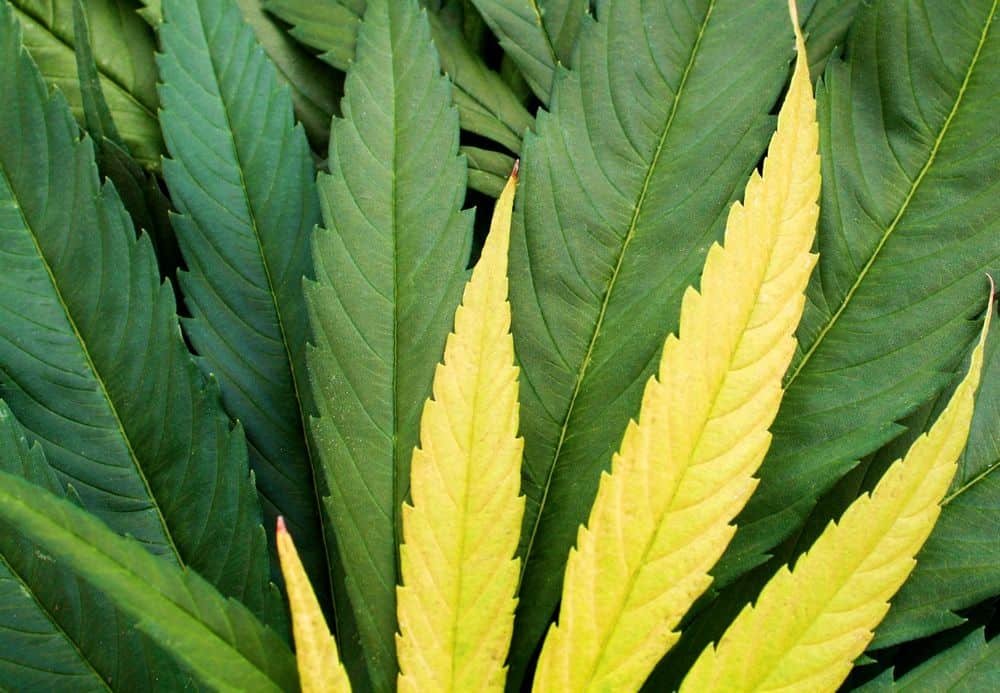
Implementing a feeding schedule that aligns with the plants’ needs at different stages of growth helps achieve the best possible yield.
Monitor And Adjust For Success
The key to improving efficiencies is to constantly monitor any changes you make and keep adjusting, until you reach the level you are aiming for.
Accurate tracking of plant growth and yield is essential for optimizing cannabis cultivation. Several tools and methods can help in this process.
- Growth Charts and Journals: Keeping detailed records of plant height, leaf development, and overall health helps in identifying trends and making informed decisions.
- Digital Sensors: These can measure temperature, humidity, CO2 levels, and light intensity in real-time, providing critical data for maintaining optimal growing conditions.
- Scales and Measuring Tools: Regularly weighing plants and measuring buds can help track progress and estimate final yields.
Tips for Overcoming Challenges In Achieving The Benchmark
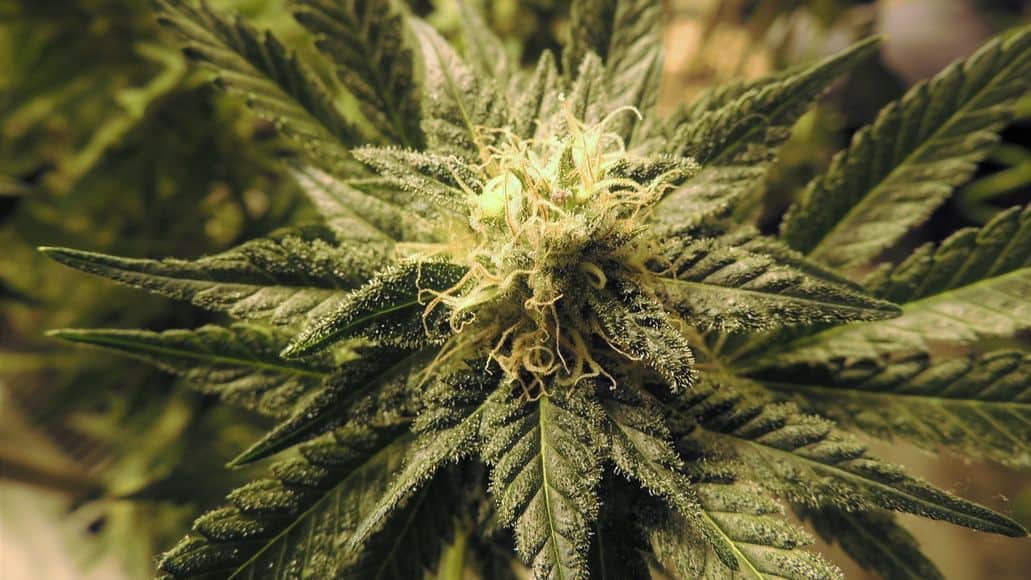
- Regular Maintenance and Cleaning: Keep your grow area clean and well-maintained to reduce the risk of pests and diseases, promoting healthier plants and better yields.
- Optimizing Light Use: Ensure your lights are properly positioned and maintained, with clean reflectors and lenses, to maximize light efficiency and plant growth.
- Adapting to Plant Needs: Being responsive to the specific needs of your plants, such as adjusting nutrient levels or environmental conditions based on their growth stage and health, can help you inch closer to achieving the 1 g/W benchmark.
- Continuous Learning and Improvement: Staying updated with the latest cultivation techniques, attending industry workshops, and learning from experienced growers can provide new insights and methods to enhance yield and efficiency. Also learn from your own previous efforts and make each successive grow better and more productive than the last one.
One Gram Of Weed Per Watt Of Light Benchmark: Final Thoughts
Achieving the 1 gram per watt benchmark in cannabis cultivation is a valuable goal that signifies efficient and productive growing practices.
By selecting the right grow lights, optimizing light placement, and employing advanced growing techniques, you can enhance light penetration and maximize yields.
Effective climate control, proper nutrient management, and the selection of high-yield strains further contribute to reaching this standard.
Continuous monitoring, adjusting to plant needs, and maintaining a clean grow environment are essential for overcoming challenges and improving efficiencies.
Ultimately, the pursuit of the 1 g/W benchmark encourages us to refine our methods, leading to more sustainable and cost-effective cannabis cultivation.
Leave a Reply